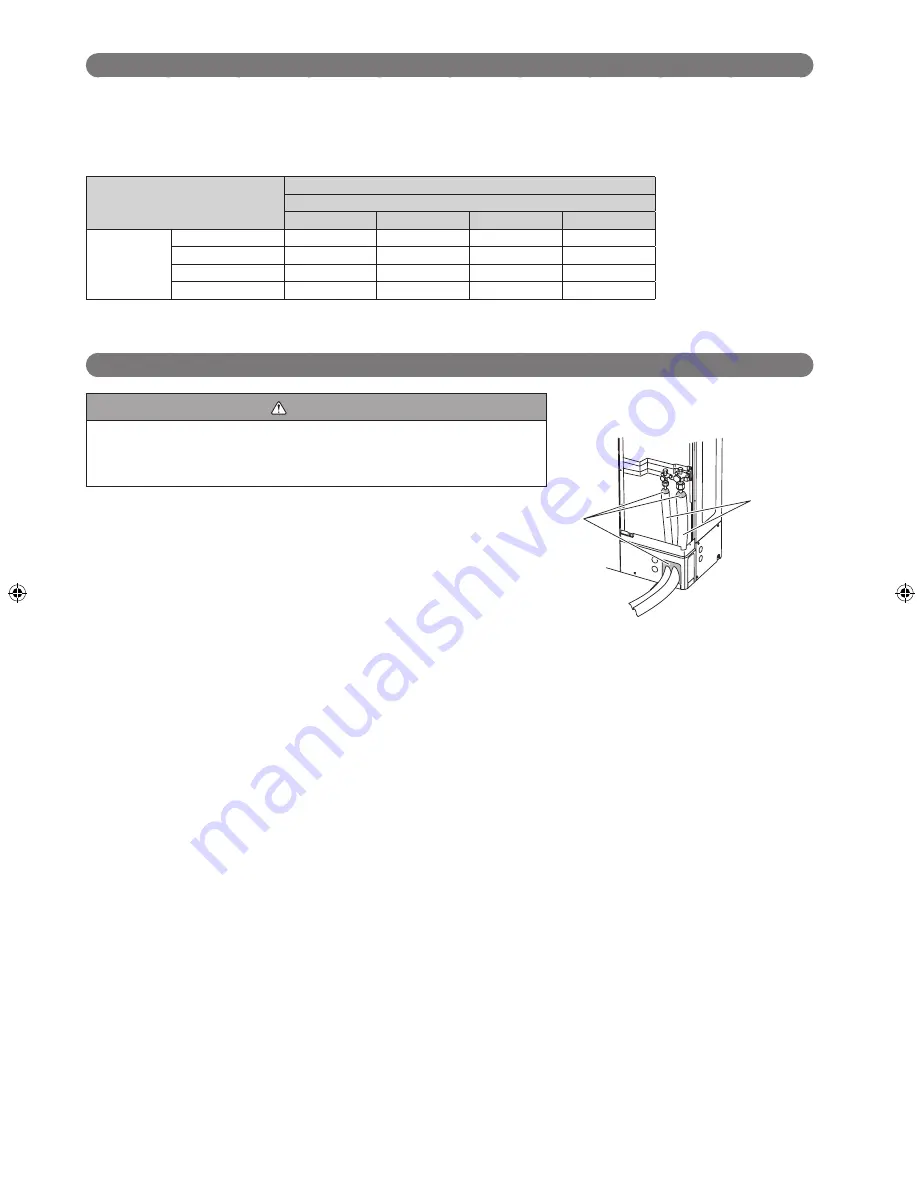
En-26
Installing insulation
71 51
Use an insulation on the refrigerant pipes to prevent condensation and dripping.
•
Determine the thickness of the insulation material by referring to Table A.
•
Table A, Selection of insulation
(for using an insulation material with equal heat transmission rate or below 01040 W/(m·k))
Relative humidity
[mm (in1)]
Insulation material
Minimum thickness
[mm(in1)]
70% or more 75% or more 80% or more 85% or more
Pipe diameter
6.35 (1/4)
8 (5/16)
10 (13/32)
13 (16/32)
17 (21/32)
9.52 (3/8)
9 (11/32)
11 (7/16)
14 (18/32)
18 (23/32)
12.70 (1/2)
10 (13/32)
12 (15/32)
15 (19/32)
19 (3/4)
15.88 (5/8)
10 (13/32)
12 (15/32)
16 (5/8)
20 (25/32)
If the ambient temperature and relative humidity exceed 32 °C (89°F), increase the level of heat insulation for the
•
refrigerant pipes.
Filling with putty
71 61
WARNING
Fill the piping holes with putty (supplied locally) to avoid any gap (Fig A).
•
If small animals such as insects enter the external unit, a short circuit
may be caused near electrical components in the service panel.
If the outdoor unit is installed at a level that is higher than the indoor
•
unit, the water that has condensed in the 3-way valve of the outdoor
unit could travel to the indoor unit. Therefore, use putty in the space
between the pipe and the insulation to prevent the entry of water to
the indoor units.
Insulation
Putty
Fig1 A
9379069342-02_IM.indb 26
17/5/2556 11:50:00













































